M7 in Scorpius is one of the brightest, most beautiful open clusters in the sky. It’s also “home” to a half-dozen other delectable deep-sky sights.
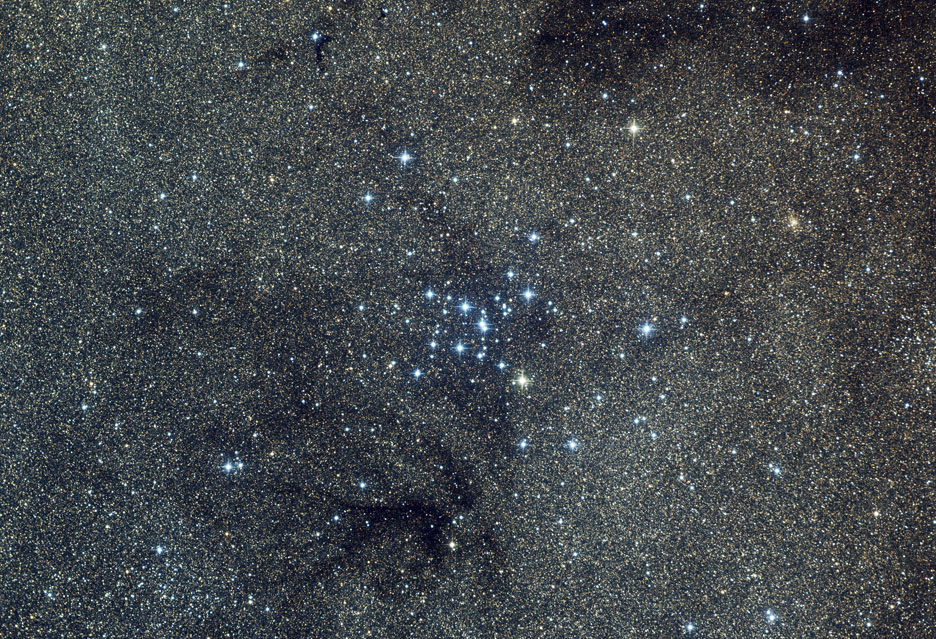
Thomas Jäger / CC BY-SA 4.0
I live at latitude 47° north and really have no business talking about M 7 in the tail of Scorpius. With a declination of –34.8° it stands just 8.2° above the southern horizon at culmination. Despite this fact, the star cluster is routinely visible with the naked eye as a round powder puff of light with a brighter center. My view may be compromised, but I'm not complaining.
In 10×50 binoculars M7 is an amazing sight, with a packed, X-shaped core surrounded by bright outliers that bring the total diameter to 75′. The cluster's true extent is a little less than 25 light-years, and it's located 990 light-years away in the Orion Arm of the Milky Way. If an orb spider spun stars instead of silk this is what its web would look like.
Ptolemy was here
M7 is also known as Ptolemy's Cluster after the Greco-Roman astronomer Claudius Ptolemaeus who first recorded it as "a nebula following the sting of Scorpius" in AD 130. The cluster is a relatively youthful addition to the galaxy with an estimated age of around 200 million years.
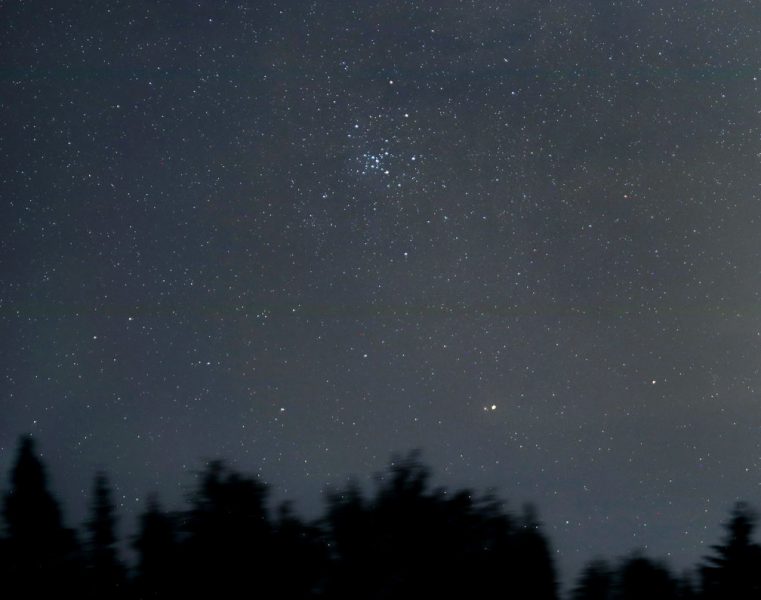
Bob King
Because of its low altitude at my location, M7 is greatly affected by atmospheric seeing, which bloats and smears the stars to varying degrees. I stick to low magnification (64×) with the 15-inch reflector on most nights. The blazing core suns pop like flashbulbs at a press conference, but my favorite feature here is a 9 arc-minute-long chain of somewhat fainter stars — magnitudes from 7.5 to 10.5 — that snakes east of the center. Stellar pairs and triads also dot the field.
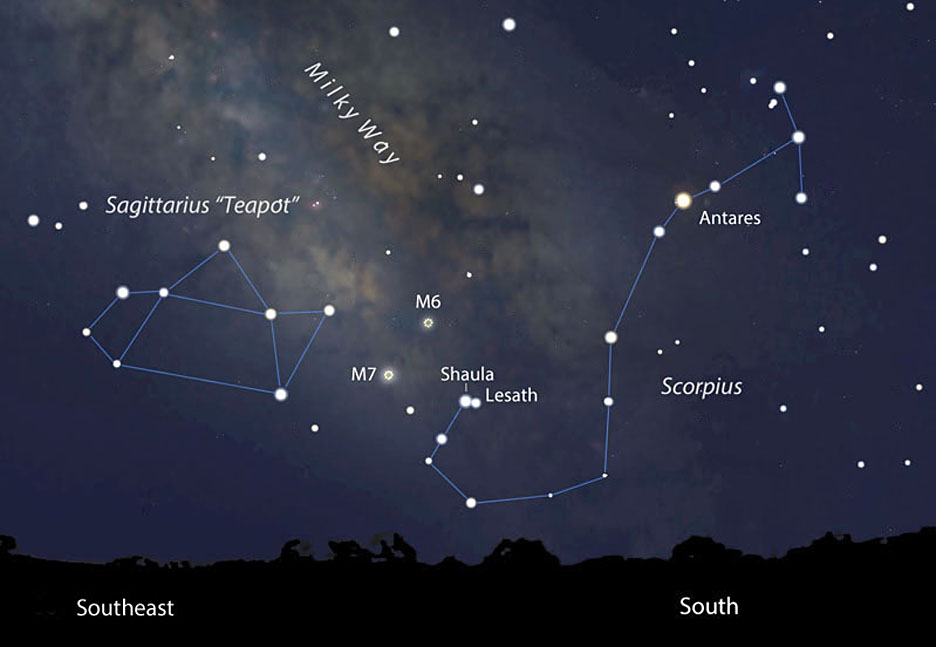
Stellarium
As eye-catching as M7 is, it also serves as a jumping-off point for other journeys. Within and along its borders are a half-dozen additional deep-sky sights which happen to lie along the same line of sight as the cluster. Let's explore them.
Peeling back the layers
- Globular cluster NGC 6453 (magnitude 10.2, diameter 7.6′) — I see a little ball of haze with a moderately compressed core at 64× magnification along M7's western border. It isn't particularly bright but easy enough to find. Increasing the magnification first to 142× and then to 245× I was happily surprised to see numerous faint stars (~14th magnitude) resolved in the cluster's halo. The globular appears quite a bit smaller than its official diameter, closer to 2′ by my estimate. A brighter star, possibly a member, lies along the cluster's west-southwest edge.
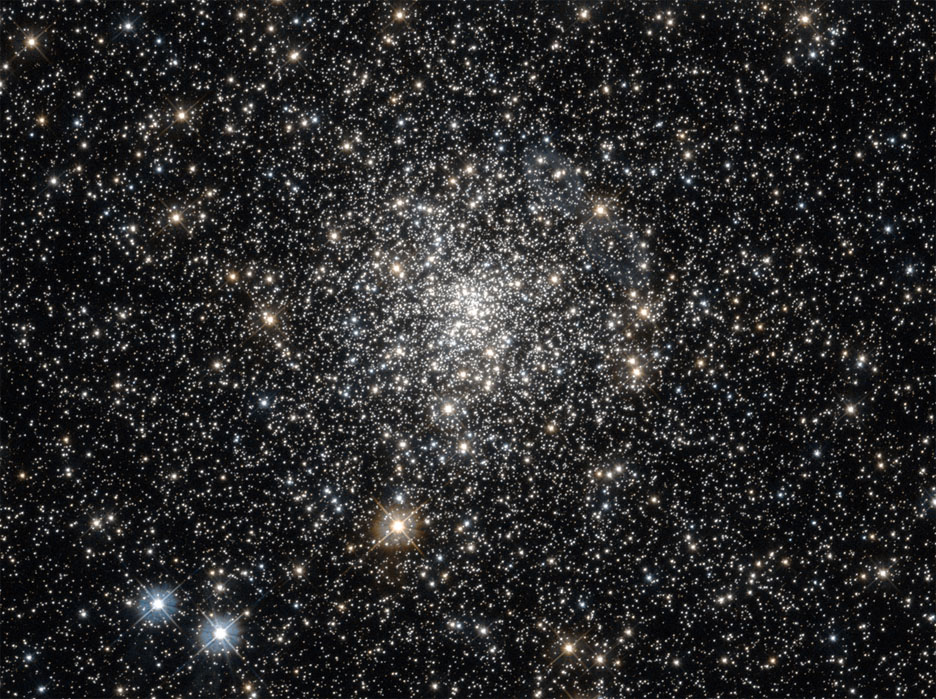
NASA / ESA / HST
- Open cluster NGC 6444 (magnitude ~10.0, diameter 12′) — What a curious shape. Fifty suns of 11th magnitude and fainter form a clumpy bar 12′ long extended east to west that look as if someone spilled them from a carried sack. With moderate magnification (142×) the view is rich with minute diamonds. Very nice!
- Open cluster Trumpler 30 (magnitude 8.8, diameter 20′) — Although only 20 stars are listed as members, this attractive, compact gathering seems to possess twice that number. The field here is so rich it's sometimes difficult to visually determine what belongs to a cluster and what doesn't. Tr 30 stands out well, and its quiet sparkle makes a wonderful contrast to M7's bright splash.
Annie Jump Cannon was here, too
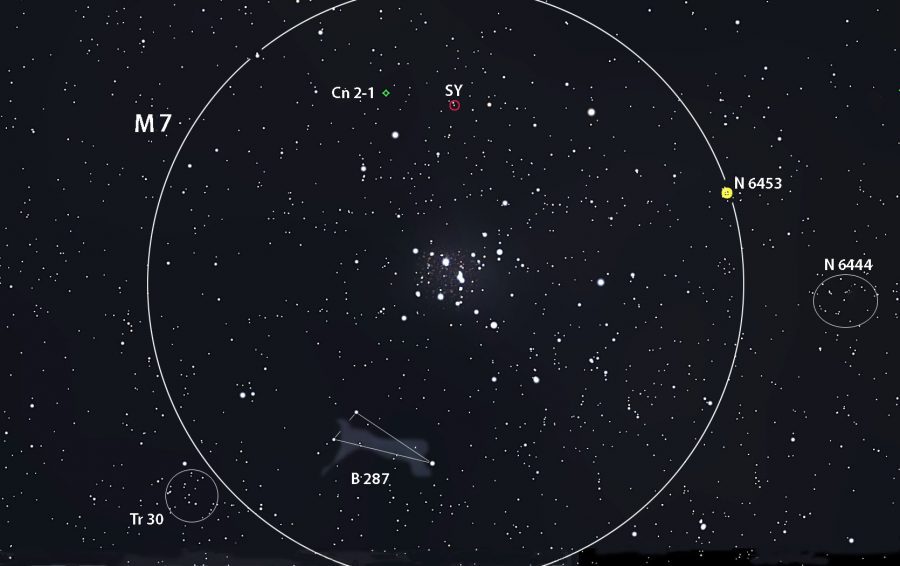
Stellarium with additions by the author
- Planetary nebula Cannon 2-1 (magnitude 12.2, diameter 2″) — Abbreviated Cn 2-1, it looks exactly like a dim star although about a magnitude fainter than the listed brightness, most likely due to atmospheric extinction. Located 20,125 light-years away, the tiny nebula really shines with an O III or UHC filter. If you interpose the filter between your eye and the eyepiece the planetary will appear to brighten by about two magnitudes. Moving the filter in and out of view will make Cn 2-1 flash and fade like a strobe light. It's also a useful way to quickly identify it in a busy field.
This nebula was first studied by American astronomer and Harvard Computer Annie Jump Cannon, who's best known for devising the OBAFGKM spectral classification still in use today. She discovered several planetary nebulae while manually classifying about 350,000 stars.
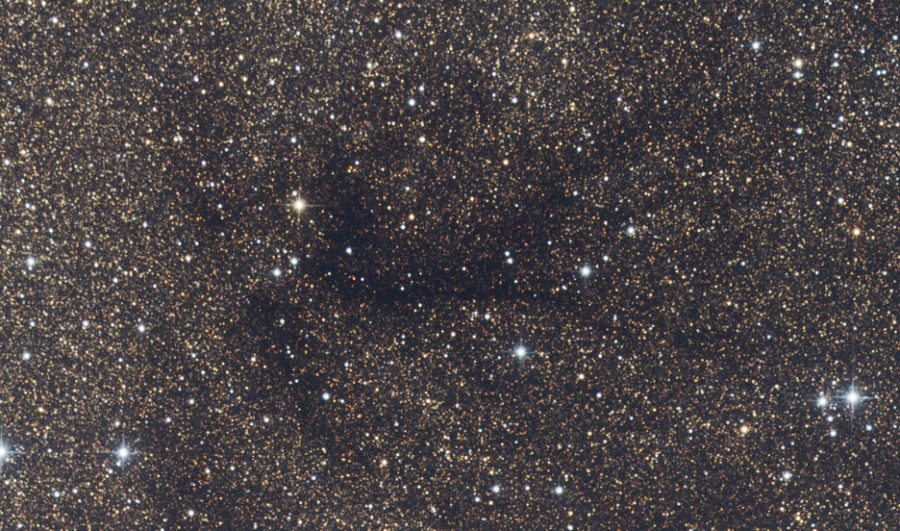
Thomas Jäger
- Dark nebula Barnard 287 (25′ x 15′) — Chocolaty clouds of interstellar dust abound in M7's vicinity. In deep photos with south up, B 286's shape resembles a pterodactyl in flight, but the best I could do at 64× was a vague, dark presence bounded by an isosceles triangle of 7th- and 8th-magnitude stars. Jiggling the telescope to increase its visibility, I could see that the nebula's western end was darker, wider, and more obvious that the rest. You'll find this shadowy reptile 25′south-southeast of the cluster's center.
- Mira variable SY Scorpii (magnitude range 8.5 to 14.5:) — Lucky us! This pulsating red giant with a period of 234.9 days is currently at maximum. It lies within the boundary of the cluster 25′ north of the center. Be aware that an unrelated 10th-magnitude star shines ~15″ immediately northeast of the variable, giving the two the appearance of a double star. I observed SY on July 9.2 UT at magnitude 8.9, when its orange-red color was very apparent. Click here for an AAVSO star chart to locate and follow the star's ups-and-downs. Cannon discovered SY Sco, too! It's one of about 300 variable stars she unearthed.
I can only imagine how much better the view of M7 must be from the Caribbean . . . not to mention the added benefit of being able to stand up to observe it instead of crouching on one's knees!
 16
16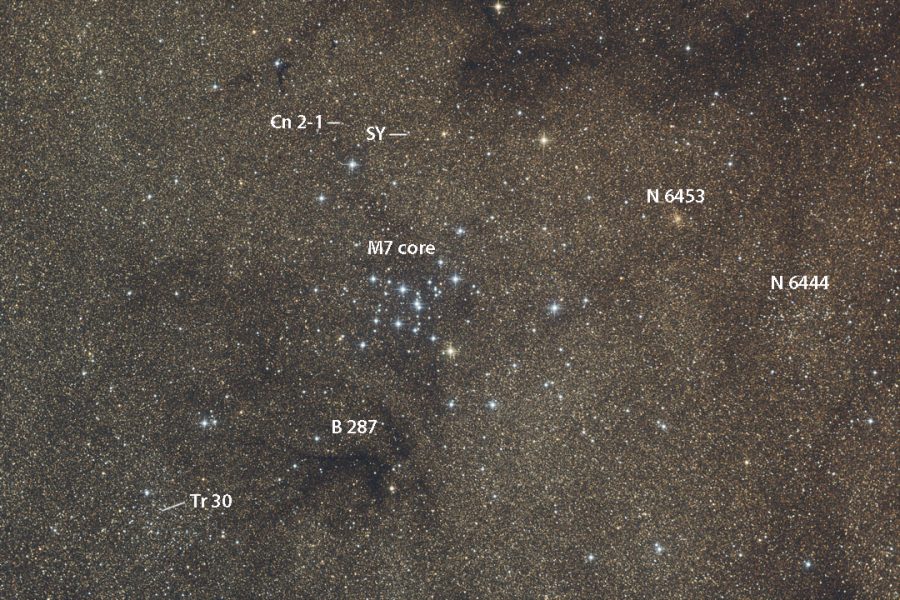










Comments
Anthony Barreiro
July 14, 2021 at 9:11 pm
This past Saturday my astronomy club had our first star party on Mount Tamalpais since before the pandemic. The weather was very clear, quite a contrast to the recent foggy cloudy gloom in the city. I spent a lot of time scanning through Scorpius, Ophiuchus, Serpens, Sagittarius, and Scutum with mounted 15x70 binoculars. M7 and M6 are always fascinating. I wish I had read this tour guide before the star party so I could have imposed on my friends to point their telescopes at these other objects around M7. By next month Scorpius will have scuttled behind an inconvenient pine tree southwest of our location.
You must be logged in to post a comment.
Anthony Barreiro
July 14, 2021 at 9:14 pm
By the way, we've got real scorpions on Mt. Tam. You can see them with a UV flashlight.
You must be logged in to post a comment.
Bob KingPost Author
July 14, 2021 at 11:40 pm
Hi Anthony,
That's too bad. Well, I suppose there's always next year. In any case you got wonderful views of the best and brightest aspects of both clusters. I'm a UV guy by the way. I'd love to see a scorpion under UV light. There are interesting rocks to hunt in my region with longwave UV. Other creatures and flowers fluoresce under UV, too.
You must be logged in to post a comment.
Sandy82579
July 15, 2021 at 10:43 am
Hey Bob, if you’re going to mention Annie Cannon, a minor bit player in object identification, you should also talk about Bernard. Unless of course you’re a misandrist, in which case I understand.
You must be logged in to post a comment.
Bob KingPost Author
July 15, 2021 at 11:25 am
Hi Sandy,
I appreciate learning a new word, thank you. No worries. I'm a big fan of Barnard and gave him his due in a recent post I did on observing M3's bright variable star. I thought Annie deserved a shout-out in this case because two of the objects on the list were discovered by her — SY Scorpii and Cn 2-1.
You must be logged in to post a comment.
Bill Tschumy
July 15, 2021 at 1:19 pm
Bob,
Sorry about that. On my system it plays immediately without a separate download. I can understand your concern.
I have uploaded it to YouTube and you can watch it there.
https://www.youtube.com/watch?v=iDVvkJHvBS4
Bill
You must be logged in to post a comment.
Yaron Sheffer
July 18, 2021 at 6:26 pm
Perhaps he is simply a gynocentrist? Like a heliocentrist, but without any anti-terrestrial feelings 😉
You must be logged in to post a comment.
Bill Tschumy
July 15, 2021 at 12:16 pm
The globular cluster NGC 6453 is interesting. It is a heavily obscured cluster on the other side of the galactic bulge. It is surprising we can see it at all.
This short video using the "Our Galaxy" app shows where it is.
https://otherwise.com/movies/NGC_6453.mov
You must be logged in to post a comment.
Bob KingPost Author
July 15, 2021 at 12:31 pm
Hi Bill,
I suspect that was also part of the reason I couldn't see the cluster's full diameter. Thanks for the clip! I noticed that on my PC it wants to download the file rather than go to the site. Is there another way to access the clip without downloading? Thanks!
You must be logged in to post a comment.
Bill Tschumy
July 15, 2021 at 1:21 pm
Bob,
Sorry about that. On my system it plays immediately without a separate download. I can understand your concern.
I have uploaded it to YouTube and you can watch it there.
https://www.youtube.com/watch?v=iDVvkJHvBS4
Bill
You must be logged in to post a comment.
Bob KingPost Author
July 15, 2021 at 3:25 pm
Bill,
Thank you! That's a real nice animation to share. So nice I'm going to put a link to it in my post 🙂
You must be logged in to post a comment.
Bill Tschumy
July 15, 2021 at 4:23 pm
You must be logged in to post a comment.
Anthony Barreiro
July 15, 2021 at 3:48 pm
Very cool. We shouldn't be able to see that globular at all!
You must be logged in to post a comment.
Bob KingPost Author
July 15, 2021 at 5:21 pm
Anthony,
Sure looks like it! A slight thinning of the interstellar dust like Baade's Window?
You must be logged in to post a comment.
Yaron Sheffer
July 18, 2021 at 6:17 pm
It is in the general direction of Baade's Window, since both BW and said globular are at galactic latitude of -4 degs.
You must be logged in to post a comment.
Frank-ReedNavigation.com
August 7, 2023 at 10:07 am
From the:
"PTOLEMY WAS HERE
M7 is also known as Ptolemy's Cluster after the Greco-Roman astronomer Claudius Ptolemaeus who first recorded it as "a nebula following the sting of Scorpius" in AD 130. "
Maybe Ptolemy saw it... but he doesn't list most naked-eye "nebular" objects, so this is not definite. A star in the Almagest listed as nebulous (which did not mean then what it means today) "following the stinger of Scorpius" has sometimes been identified with M7, but the case is not simple, and the same star is often identified as Fuyue (that's the IAU-approved name; it's also known as "G Sco"). One might ask, "but hasn't everybody been calling it Ptolemy's Cluster forever?" No, that's a relatively modern coinage from the 1990s adopted by Messier list fans (quite possibly one specific fan). It was added in 2007 without discussion into the Wikipedia article for M7 and now tends to be treated as historical fact. It's not -- it's a speculative identification, even plausible, but not fact. Also note that the Wikipedia article, and other sources which quote it, list the date as "AD 130" without qualification, but all we have is a vague reference in the Almagest. The date is no better than the estimates of the creation date of that work which has decades of uncertainty. If the Almagest's speculative identification of M7 is quoted, the date should be no more specific than "circa 150" (that's 150 AD, or CE if the local style manual prefers).
Frank Reed
You must be logged in to post a comment.
You must be logged in to post a comment.